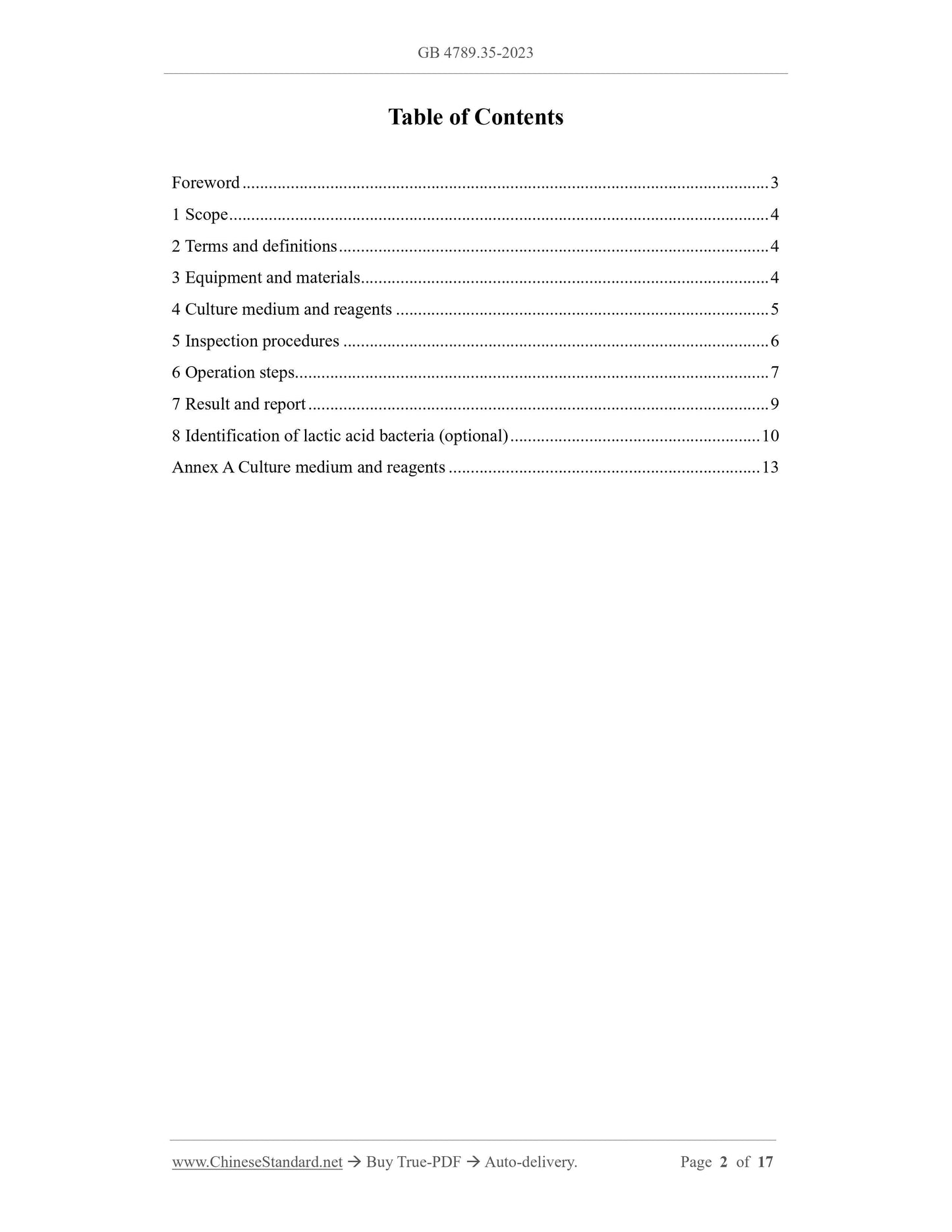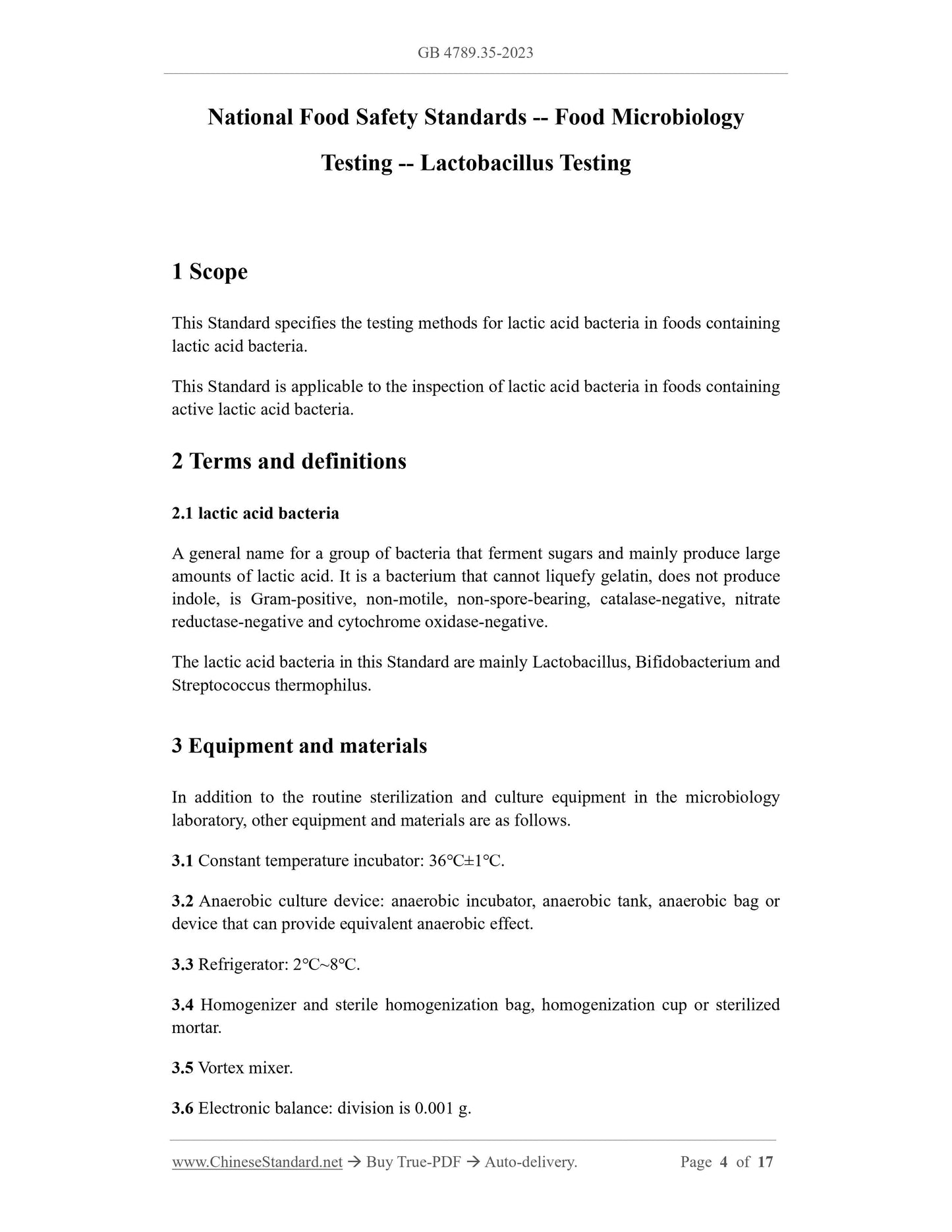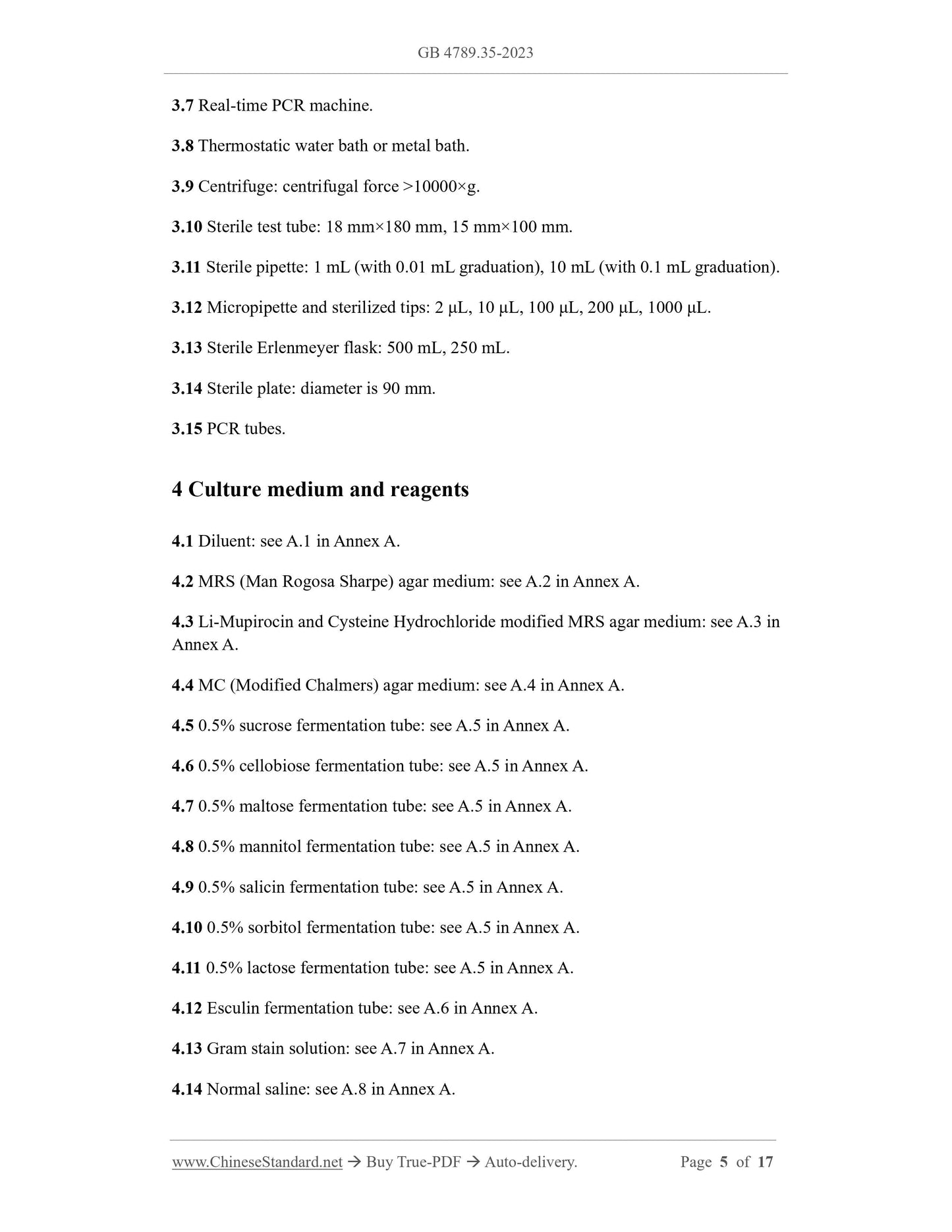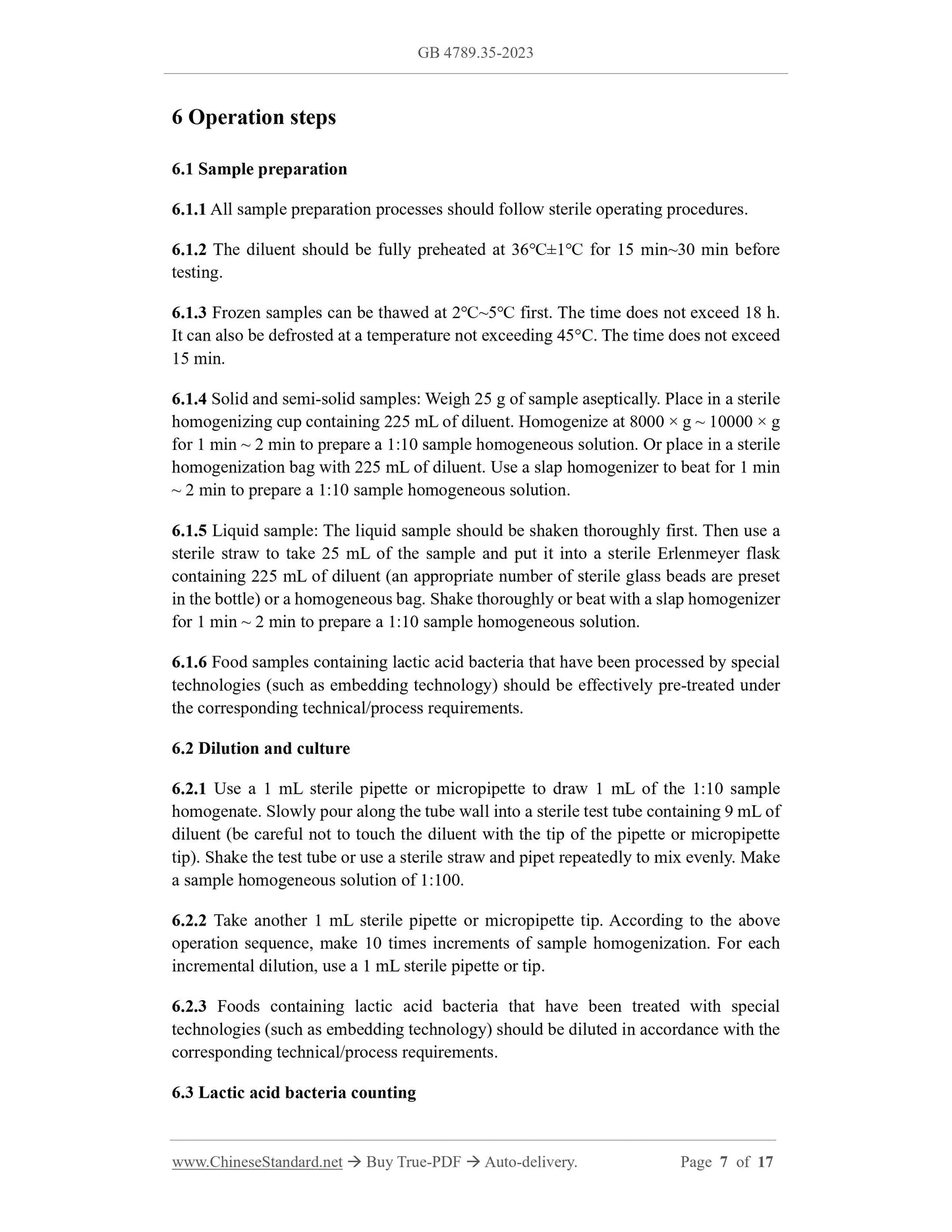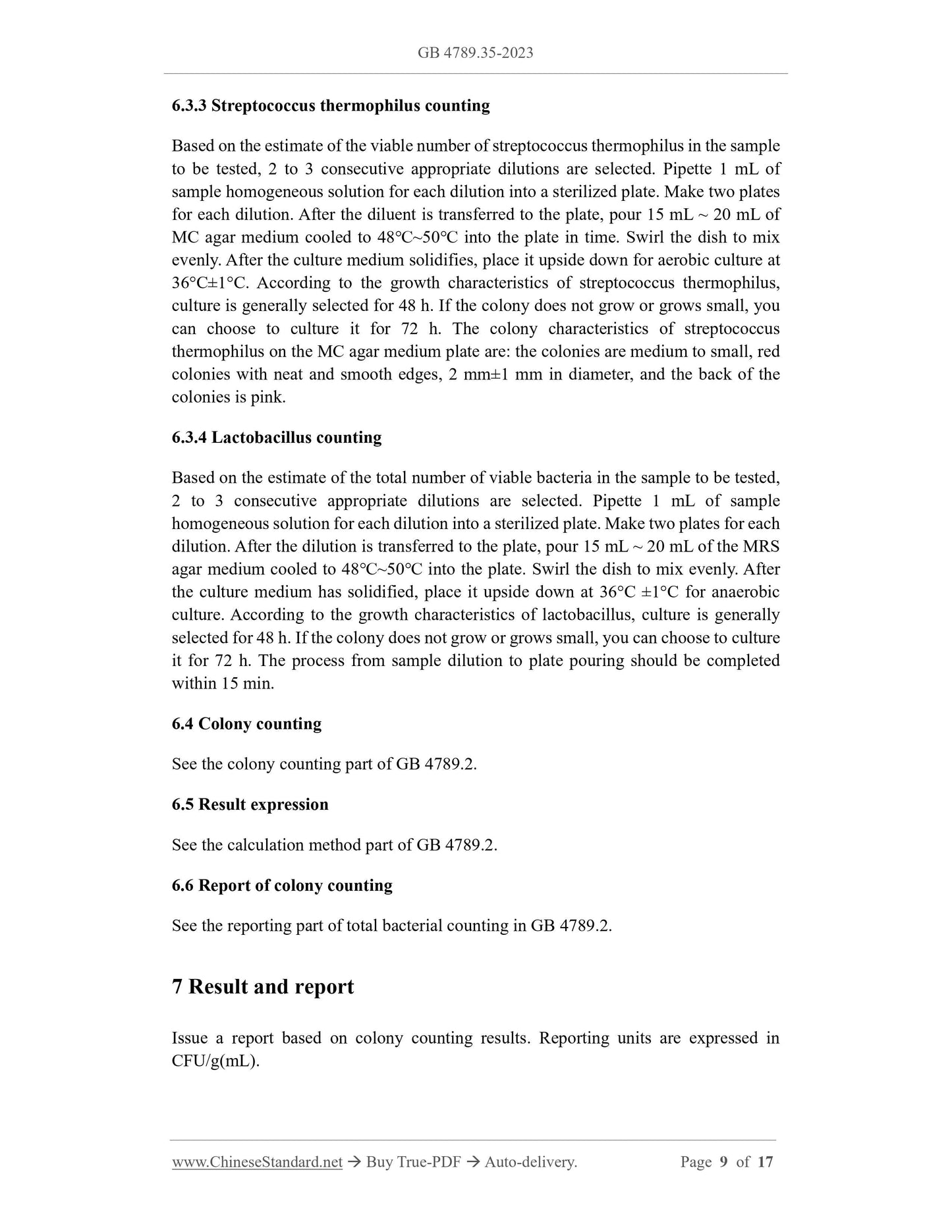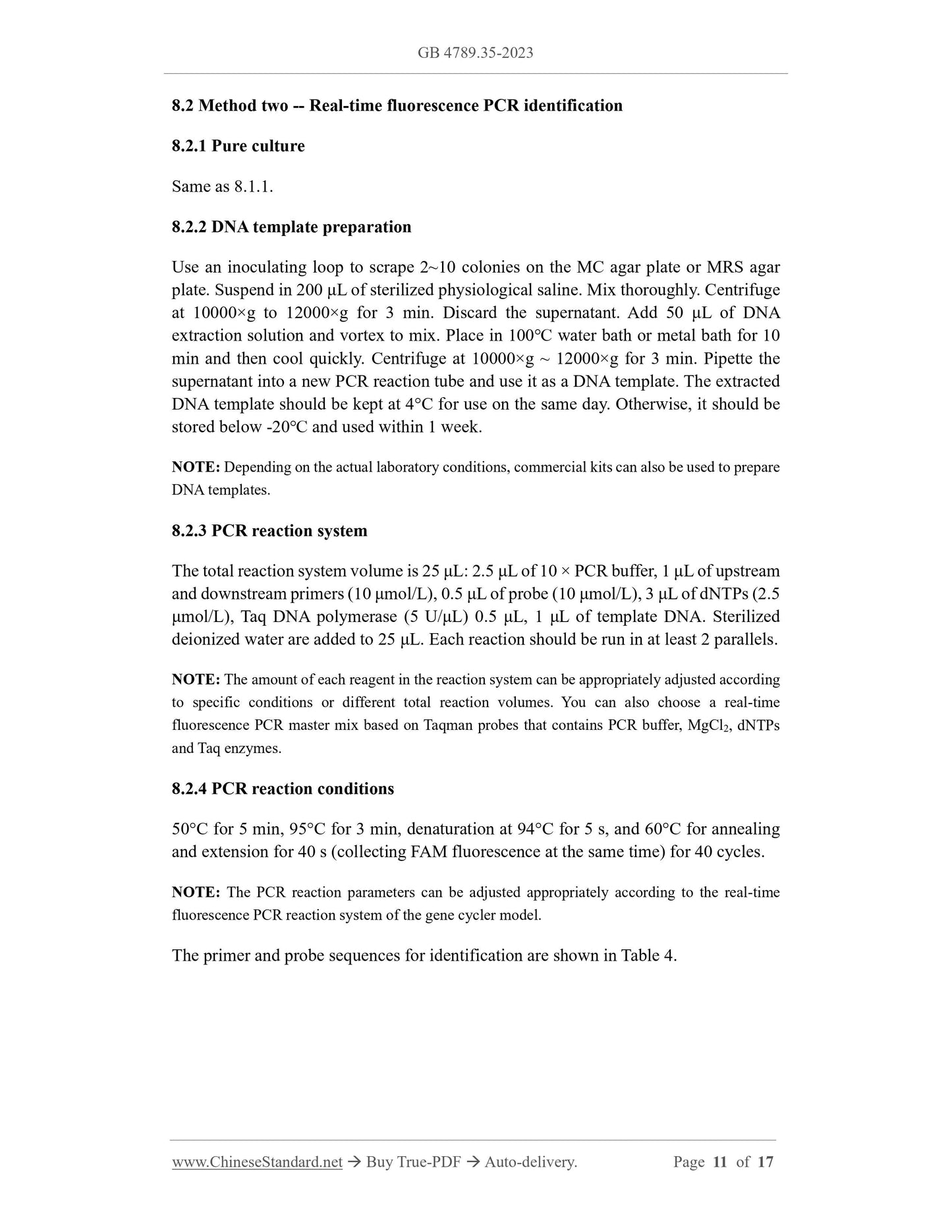1
/
of
7
www.ChineseStandard.us -- Field Test Asia Pte. Ltd.
GB 4789.35-2023 English PDF
GB 4789.35-2023 English PDF
Regular price
$230.00
Regular price
Sale price
$230.00
Unit price
/
per
Shipping calculated at checkout.
Couldn't load pickup availability
GB 4789.35-2023: National food safety standard - Food microbiological examination - Lactic acid bacteria
Delivery: 9 seconds. Download (and Email) true-PDF + Invoice.Get Quotation: Click GB 4789.35-2023 (Self-service in 1-minute)
Newer / historical versions: GB 4789.35-2023
Preview True-PDF
Scope
This Standard specifies the testing methods for lactic acid bacteria in foods containinglactic acid bacteria.
This Standard is applicable to the inspection of lactic acid bacteria in foods containing
active lactic acid bacteria.
Basic Data
| Standard ID | GB 4789.35-2023 (GB4789.35-2023) |
| Description (Translated English) | National food safety standard - Food microbiological examination - Commercial sterilization |
| Sector / Industry | National Standard |
| Classification of Chinese Standard | X09 |
| Word Count Estimation | 17,193 |
| Date of Issue | 2023-09-06 |
| Date of Implementation | 2024-03-06 |
| Issuing agency(ies) | National Health Commission of the People's Republic of China, State Administration for Market Regulation |
| Summary | This standard specifies food commercial sterility inspection procedures, inspection steps, result determination and reporting requirements. This standard applies to the inspection of food commercial sterility. |
Share

